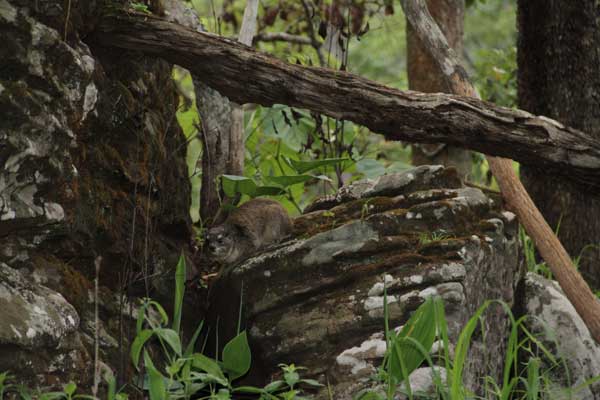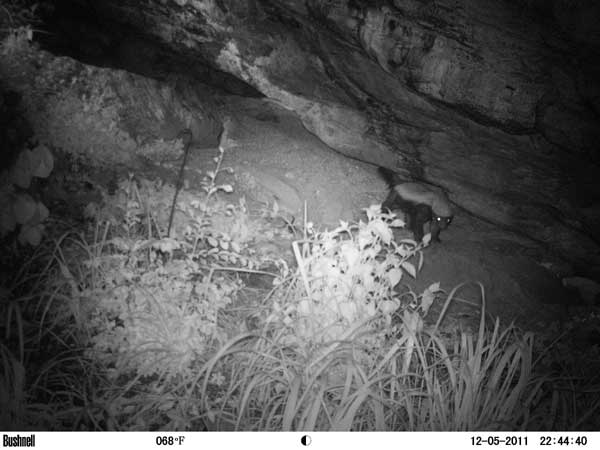Japanese report
AS-HOPE report
Number: AS-23-018
Behavioral and ecological study of wild mammals in woodland, Ugalla, Tanzania
Report: Eriko Iida
Date: 2011/8/8 - 2011/12/21
Recently, many paleoanthropologists argue that human evolution in its early stage occurred in woodland not in open land.
Some primatologists have been studying chimpanzees in woodland, Western Tanzania for this reason.
In order to have better insights of human evolution through hominid adaptation in woodland ecosystem, it is also important to have better understanding of ecology and behaviors of other sympatric mammals which are less known compared to those of chimpanzees.
In this study, I aimed to collect basic data on mammalian fauna at Ugalla, Western Tanzania, especially focusing on bush hyraxes (Heterohyrax brucei).
The study was conducted in the Ugalla Forest Reserve, Tanzania, from August to December 2011 (late dry season to early wet season).
First, in order to grasp the diurnal and nocturnal mammalian fauna and their densities, I carried out a line transect census of feces once a week, opportunistic direct observations of larger mammals, and set up camera traps.
As a result, many species was confirmed some of which were recorded for the first time in this area.
Second, in order to obtain basic behavioral and ecological date of bush hyraxes, I made intensive survey of their burrows and their communal "latrines" and collected their fecal samples.
The locations of the sightings were recorded using a GPS.
A detailed survey was made of the plant species composition around each rocky outcrop.
I set also up automatic camera traps in front of their burrows.
It was found that they move frequently in the night although they have been referred to as diurnal mammals.
It is also confirmed that they used the same caves used by other mammalian species.
I also collected their activity patterns by radio-tracking.
From now on, I will continue analyzing the data more in detail.

A hyrax is resting on the rock

Ratel came out from the borrow
AS-HOPE Project< > >
|




